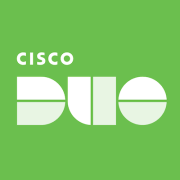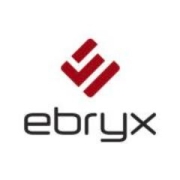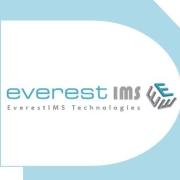ZTNA as a Service provides a secure, scalable solution for accessing corporate resources remotely. Its dynamic access capabilities redefine security by focusing on user identity and context, ensuring only authorized users can access critical data and applications.
ZTNA as a Service revolutionizes how organizations implement access control by replacing traditional VPN methods with a cloud-centric security model. It leverages identity-based security mechanisms, giving enterprises the flexibility to manage user access with more granularity and precision. This approach ensures continuous verification of users and devices, thereby tightening security while allowing seamless access to necessary resources.
What are the critical features of ZTNA as a Service?Finance and healthcare sectors implement ZTNA as a Service to protect sensitive data while maintaining compliance with industry regulations. The solution's ability to handle high traffic securely makes it a valuable tool for industries with strict data governance requirements.
ZTNA as a Service helps organizations protect critical assets by focusing on secure, identity-driven access management. Its ability to offer dynamic and flexible security controls aligns with evolving digital transformation needs.











































Zero Trust Network Access is an emerging security model that focuses on providing secure access to resources based on the principles of zero trust. ZTNA as a Service is a cloud-based solution that offers organizations the ability to implement ZTNA without the need for extensive infrastructure or expertise. There are several types of ZTNA as a Service providers, each offering unique features and capabilities.
1. Cloud-based ZTNA: These providers offer ZTNA solutions that are entirely cloud-based. They leverage the scalability and flexibility of the cloud to provide secure access to resources from any location. Cloud-based ZTNA providers often offer features such as multi-factor authentication, user and device profiling, and granular access controls.
2. Managed ZTNA: Managed ZTNA providers offer a fully managed service where they handle the implementation, configuration, and maintenance of the ZTNA solution. This is particularly beneficial for organizations that lack the internal resources or expertise to manage their ZTNA infrastructure. Managed ZTNA providers often provide 24/7 monitoring and support to ensure the security and availability of the ZTNA solution.
3. Hybrid ZTNA: Hybrid ZTNA providers offer a combination of on-premises and cloud-based ZTNA solutions. This allows organizations to leverage their existing infrastructure while also benefiting from the scalability and flexibility of the cloud. Hybrid ZTNA providers often provide seamless integration with existing security tools and infrastructure.
4. Identity as a Service with ZTNA: Some providers offer ZTNA as an add-on to their existing IDaaS solutions. This allows organizations to integrate ZTNA capabilities with their identity and access management systems, providing a comprehensive security solution. IDaaS with ZTNA providers often offer features such as single sign-on, identity governance, and privileged access management.
5. Network as a Service with ZTNA: NaaS with ZTNA providers offer a combination of network connectivity and ZTNA capabilities. They provide secure access to resources through their network infrastructure, eliminating the need for organizations to manage their own network infrastructure. NaaS with ZTNA providers often offer features such as secure connectivity, traffic segmentation, and network monitoring.
ZTNA as a Service solutions offer a secure and efficient way to implement Zero Trust principles in an organization's network infrastructure. By leveraging cloud-based solutions, these solutions enable organizations to adopt a Zero Trust approach without the need for extensive on-premises infrastructure or complex configurations. Here's an overview of the different ways ZTNA as a Service works:
1. Cloud-based Architecture:
ZTNA as a Service provuders utilize cloud-based architecture to deliver their services. This eliminates the need for organizations to deploy and manage their own hardware or software infrastructure.
2. Secure Access:
ZTNA as a Service providers ensure secure access to applications and resources by implementing a Zero Trust model. They authenticate and authorize users based on various factors such as user identity, device posture, and contextual information.
3. Identity Verification:
Users are required to authenticate their identity before accessing any resources. This can be achieved through multi-factor authentication methods like passwords, biometrics, or hardware tokens.
4. Micro-segmentation:
ZTNA as a Service Providers implement micro-segmentation to divide the network into smaller segments. Each segment has its own security policies and access controls, reducing the attack surface and limiting lateral movement.
5. Application-level Access:
Instead of granting network-level access, ZTNA as a Service Providers focus on providing application-level access. Users are granted access only to the specific applications or resources they need, based on their role and permissions.
6. Secure Connectivity:
ZTNA as a Service Providers establish secure connections between users and applications, regardless of their location. This is achieved through encrypted tunnels, ensuring data confidentiality and integrity.
7. Continuous Monitoring:
ZTNA as a Service Providers continuously monitor user activities, network traffic, and application behavior. Any suspicious or anomalous behavior is detected and flagged for further investigation.
8. Scalability and Flexibility:
ZTNA as a Service Providers offer scalable solutions that can accommodate organizations of all sizes. They provide flexibility to add or remove users, applications, and resources as per the organization's requirements.
9. Integration with Existing Infrastructure:
ZTNA as a Service Providers seamlessly integrate with an organization's existing infrastructure, including identity providers, firewalls, and security systems. This ensures a smooth transition and minimizes disruption during implementation.
10. Centralized Management:
ZTNA as a Service Providers offer centralized management consoles or dashboards. These consoles provide administrators with visibility and control over user access, policies, and security configurations.
In summary, ZTNA as a Service providers leverage cloud-based architecture, implement Zero Trust principles, and provide secure application-level access to users. ZTNA as a Service offers scalability, flexibility, and centralized management, enabling organizations to enhance their network security posture without the need for extensive on-premises infrastructure.
ZTNA as a Service enhances security by implementing a zero-trust model which assumes that no user or device, whether inside or outside your network, should be trusted by default. You benefit from continuous verification where user identities and device postures are verified before granting access. This minimizes attack surfaces, prevents lateral movement of threats, and reduces the risk of unauthorized access.
What are the key features to look for in a ZTNA as a Service provider?When choosing a ZTNA as a Service provider, prioritize features such as seamless integration with existing IT infrastructure, real-time monitoring and analytics, comprehensive device support, scalable cloud-based architecture, and robust identity and access management capabilities. These features ensure you receive a solution that enhances both security and user experience across your organization.
How can ZTNA as a Service improve remote workforce productivity?ZTNA as a Service can significantly improve remote workforce productivity by providing secure, seamless access to applications and resources from any location. With adaptive controls based on user context, it eliminates unnecessary VPN dependencies and latency. This ensures that remote workers experience fast, reliable access which enhances their ability to perform tasks efficiently.
What challenges should you anticipate when implementing ZTNA as a Service?When implementing ZTNA as a Service, anticipate challenges such as potential integration issues with legacy systems, ensuring user and device compliance with security policies, and managing organizational change. Address these by conducting thorough assessments, choosing flexible solutions, and investing in training to ease the transition for your team.
Can ZTNA as a Service reduce operational costs?ZTNA as a Service can reduce operational costs by streamlining access management and reducing the complexity associated with traditional network security models. By moving to a cloud-based zero-trust solution, you can lower hardware and maintenance expenses and reduce the time spent managing access controls, allowing resources to focus on strategic initiatives.